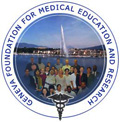Valor predictivo de las pruebas de vía respiratoria anatómicamente difícil
Palabras clave:
laringoscopía, intubación, valor predictivo de las pruebasResumen
Introducción: el tratamiento de la vía respiratoria tiene importancia dentro de los cuidados que involucran la práctica del Especialista en Anestesiología, la identificación previa del paciente con vía respiratoria anatómicamente difícil constituye una prioridad. Objetivo: determinar la sensibilidad y la especificidad de las diferentes pruebas para vía respiratoria anatómicamente difícil. Métodos: se realizó un estudio descriptivo, transversal y prospectivo con métodos cuanti-cualitativos en 3 520 pacientes mayores de 19 años de ambos sexos que recibieron anestesia general endotraqueal para cirugía electiva o de urgencia en el Hospital “Arnaldo Milián Castro” desde febrero de 2018 hasta febrero de 2019. Se utilizaron varias pruebas predictivas que se aplicaron en el preoperatorio inmediato. Se precisaron el antecedente de vía respiratoria anatómicamente difícil, la presencia de signos de obstrucción de vía respiratoria superior y la dificultad en la ventilación con máscara y se determinó el grado de dificultad de la laringoscopia. Resultados: la incidencia de intubación difícil fue de 1%, el aumento del índice de masa corporal, los signos de obstrucción de vía aérea superior y la ventilación difícil con máscara se relacionaron significativamente con la intubación difícil. Las pruebas predictivas mostraron una alta especificidad y un alto valor predictivo negativo pero una baja sensibilidad, la distancia interdental reveló la mayor sensibilidad y el movimiento de la articulación atlanto-occipital el mayor valor predictivo positivo. Conclusiones: las pruebas predictivas revelaron una alta especificidad con baja sensibilidad y una relación directamente proporcional entre vía respiratoria anatómicamente difícil y el número de pruebas predictivas con resultados positivos.Descargas
Citas
1. Cordero Escobar I. Vía respiratoria anatómicamente difícil. En: Anestesiología. Criterios y tendencias actuales. La Habana: Editorial Ciencias Médicas; 2013. Disponible en: http://www.bvs.sld.cu/libros/anestesiologia_criterios_tendencias/anestesiologia_criterios_completo.pdf
2. Valdés Soutelo A, Cordero Escobar I, Cordoví de Armas L, Pernas González A. Eficacia diagnóstica de un método predictivo de vía respiratoria anatómicamente difícil. Rev Cubana Anestesiol Reanim [Internet]. 2011 [citado 22 Oct 2019];10(3):186-197. Disponible en: http://scielo.sld.cu/scielo.php?script=sci_arttext&pid=S1726-67182011000300003
3. Echevarría Hernández AT, Autie Castro Y, Hernández Domínguez K, Díaz Rodríguez C, Sirvent González Y. Pruebas predictivas para la evaluación de la vía aérea en el paciente quirúrgico. Rev Cubana Anestesiol Reanim [Internet]. 2010 Sep-Dic [citado 22 Oct 2019];9(3):175-185. Disponible en: http://scielo.sld.cu/scielo.php?script=sci_arttext&pid=S1726-67182010000300005
4. Abdulla S, Schwemm KP, Eckhart R, Abdulla W. Macking endotraqueal intubation easy and successful, particularly in unexpected difficult airway. Int J Crit Illn Inj Sci [Internet]. 2014 Jan-Mar [citado 22 Oct 2019];4(1):24-28. Disponible en: https://www.ncbi.nlm.nih.gov/pmc/articles/PMC3982366/
5. Chirino-Sánchez L, Vera-Rivero DA, Chirino-Sánchez L. Pruebas predictivas: su efectividad en la evaluación de la vía aérea del paciente quirúrgico. Rev 16 de Abril [Internet]. 2018 [citado 22 Oct 2019];57(268):97-105. Disponible en: https://www.medigraphic.com/pdfs/abril/abr-2018/abr18268f.pdf
6. Coloma R, Álvarez JP. Manejo avanzado de la vía aérea. Rev Med Clin Condes [Internet]. 2011 [citado 22 Oct 2019];22(3):270-79. Disponible en: http://www.clc.cl/clcprod/media/contenidos/pdf/med_22_3/270-279-dr-coloma.pdf
7. Valero R, Mayoral V, Massó E, López A, Sabaté S, Canet J, et al. Evaluación y manejo de la vía aérea difícil prevista y no prevista: Adopción de guías de práctica. Rev Esp Anestesiol Reanim [Internet] 2008 Nov [citado 22 Oct 2019];55(9):563-570. Disponible en: https://www.elsevier.es/es-revista-revista-espanola-anestesiologia-reanimacion-344-articulo-evaluacion-manejo-via-aerea-dificil-S0034935608706534
8. Asai T. Strategies for difficult airway management-the current state is not ideal. J Anesth [Internet]. 2013 [citado 22 Oct 2019];27(1):157-160. Disponible en: https://link.springer.com/content/pdf/10.1007/s00540-0121521-4.pdf
9. Brindley PG, Beed M, Duggan LV, Hung O, Murphy MF. Updating our apporoach to difficult and failed airway: time to stop and think. Can J Anaesth [Internet]. 2016 Feb [citado 22 Oct 2019];63(4):373-381. Disponible en: https://link.springer.com/article/10.1007/s12630-016-0594-1
10. Riveros E, Manrique-Abril F, Ospina Tunja JM. Análisis físico y modelo matemático de la vía aérea. Aplicación clínica y posible impacto sobre intubación traqueal. Acta Med Colomb [Internet]. 2012 Ene-Mar [citado 22 Oct 2019];37(1):21-26. Disponible en: http://www.actamedicacolombiana.com/anexo/articulos/v37 n1a05.pdf
11. Ríos García E, Reyes Cedeño JL. Valor predictivo de las evaluaciones de la vía aérea difícil. Trauma [Internet]. 2011 Sep-Dic [citado 22 Oct 2019];8(3):63-70. Disponible en: http://www.medigraphic.com/pdfs/trauma/tm2005/tm053b.pdf
12. Pérez Santos FJ, Hernández Salgado M, Díaz-Landeira J, Santana Dominguez M. Usefulness of difficult airway predictors in the emergency department. Emergencias [Internet]. 2011 Aug [citado 22 Oct 2019];23(4):293-98. Disponible en: http://emergencias.portalsemes.org/descargar/usefulness-of-difficult-airway-predictors-in-the-emergency-department/force_download/
13. Moon HY, Baek CW, Kim JS, Koo GH, Kim JY, Woo YC, et al. The causes of difficult tracheal intubation and preoperative assessments in different age groups. Korean J Anesthesiol [Internet]. 2013 Apr [citado 22 Oct 2019];64(4):308-314. Disponible en: https://www.ncbi.nlm.nih.gov/pmc/articles/PMC3640162/
14. Brunet L. Vía aérea difícil en obesidad mórbida. Rev Chil Anest [Internet]. 2010 [citado 22 Oct 2019];39:110-115. Disponible en: http://www.sld.cu/galerias/pdf/sitios/anestesiologia/obesidad_via_aerea_dificil.pdf
15. Carlson JN, Hostler D, Guyette FX, Pinchalk M, Martin-Gill Ch. Derivation and validation of the prehospital difficult airway identification tool (PreDAIT): A predictive model for difficult intubation. West J Emerg Med [Internet]. 2017 Jun [citado 22 Oct 2019];18(4):662-672. Disponible en: https://www.ncbi.nlm.nih.gov/pmc/articles/PMC5468072/. https://dx.doi.org/10.5811%2Fwestjem.2017.1.32938
16. Khan ZH, Maleki A, Makarem J, Mohammadi M, Khan RH, Zandieh A. A comparison of the upper lip bite test with thyomental/thyrosternal distances and mandible length in predicting difficulty in intubation: A prospective study. Indian J Anaesth [Internet]. 2011 Jan-Feb [citado 22 Oct 2019];55(1):43-46. Disponible en: https://www.ncbi.nlm.nih.gov/pmc/articles/PMC3057244/
17. Pratibha JS, Dubey KP, Yadav JP. Predictive value of upper lip bite test and ratio of height to thyromental distance compared to other multivariate airway assessment tests for difficult laryngoscopy in apparently normal patients. J Anaesthesiol Clin Pharmacol [Internet]. 2013 Apr-Jun [citado 22 Oct 2019];29(2):191-195. Disponible en: https://www.ncbi.nlm.nih.gov/pmc/articles/PMC3713666/
18. Vázquez-Soto H. Patologías asociadas a la vía aérea difícil. Anest Méx [Internet]. 2017 [citado 22 Oct 2019];29(Supl.1):[aprox. 21 p.]. Disponible en: http://www.scielo.org.mx/pdf/am/v29s1/2448-8771-am-29-00009.pdf
19. Picrin Dimot JD, Picrin Dimot D, Picrin Minot J. El método morfométrico en el diagnóstico predictivo de la vía respiratoria anatómicamente difícil. Rev Cubana Anestesiol Reanim [Internet]. 2011 May-Ago [citado 22 Oct 2019];15(2):84-96. Disponible en: http://scielo.sld.cu/scielo.php?script=sci_arttext&pid=S1726-67182016000200001
20. Mateos Rodríguez AA, Navalpotro Pascual JM, Pardillos Ferrer L, Fernández Domínguez JJ, Barragán Chaves J, Martínez González EP. Validez de los predictores de vía aérea difícil en medicina extrahospitalaria. Anales Sis San Navarra [Internet]. 2014 Ene-Abr [citado 22 Oct 2019];37(1):[aprox. 7 p.]. Disponible en: http://scielo.isciii.es/scielo.php?script=sci_arttext&pid=S1137-66272014000100010&lng=es. http://dx.doi.org/10.4321/S1137-66272014000100010
21. Cardona Ramírez D, Hernández Guevara J, López Tulcán AL. Predictores de vía aérea difícil en estudiantes del área de la salud. Cimel [Internet]. 2017 [citado 22 Oct 2019];22(2):41-46. Disponible en: https://www.cimel.felsocem.net/index.php/CIMEL/article/view/959/415
22. Urtubia RV, Escudero ZE, Esparza GO, Gutiérrez GJM. El aporte de las nuevas guías de la sociedad de vía aérea difícil (DAS). Rev Chil Anest [Internet]. 2015 [citado 22 Oct 2019];44(2):151-162. Disponible en: https://revistachilenadeanestesia.cl/el-aporte-de-las-nuevas-guias-de-la-sociedad-de-via-aerea-dificil-das/
23. Freck C, MitChell VS, McNarry AF, Mendonca C, Bragrath R, Patel A, et al. Difficult airway society 2015 guidelines for manegement of unanticipated difficult intubation in adult. Br J Anaesth [Internet]. 2015 Dec [citado 22 Oct 2019];115(6):827-848. Disponible en: https://www.ncbi.nlm.nih.gov/pmc/articles/PMC4650961/. https://dx.doi.org/10.1093/bja/aev371
24. Noskov AK, Rosenstock CV, Wetterslev J, Astrup G, Afshari A, Lundstrom LH. Diagnostic accuracy of anaestethesiologist´prediction of difficult airway management in daily clinical practice: a cohort study of 188 064 patients registered in the Danich Anaesthesia Database. Anaesth [Internet]. 2015 Mar [citado 22 Oct 2019];70(3):272-281. Disponible en: https://onlinelibrary.wiley.com/doi/pdf/10.1111/anae.12955. https://doi.org/10.1111/anae.12955
25. Mosier JM, Joshi R, Hype C, Pacheco G, Valenzuela T, Sakles JC. The physiologically difficult airway. West J Emerg Med [Internet]. 2015 Dec [citado 22 Oct 2019];16(7):1109-1117. Disponible en: https://www.ncbi.nlm.nih.gov/pmc/articles/PMC4703154/
26. Weingart SD, Trueger NS, Wong N, Scofi J, Singh N, Rudolph SS. Delayed sequence intubation: a propective observational study. Ann Emerg Med [Internet]. 2015 Apr [citado 22 Oct 2019];65(4):349-355. Disponible en: https://www.clinicalkey.es/service/content/pdf/watermarked/1-s2.0-S0196064414013651. https://doi.org/10.1016/j.annemergmed.2014.09.025
27. Patel A, Nouraei SA. Trasnasal humidified rapidid-insufflation ventilatory exchange (THRIVE): a physiological method of increasing apnoea time in patients with difficult airways. Anaesth [Internet]. 2015 Mar [citado 22 Oct 2019];70(3):323-329. Disponible en: https://www.ncbi.nlm.nih.gov/pmc/articles/PMC4674986/
28. Hagberg CA, Gabel JC, Connis RT. Difficult airway society 2015 guidelines for the management of unanticipated difficult intubation in adults: not just another algoristhm. Br J Anaesth [Internet]. 2015 Dec [citado 22 Oct 2019];115(6):812-814. Disponible en: https://academic.oup.com/bja/article/115/6/812/241879. https://doi.org/10.1093/bja/aev404
29. Kristensent MS, Teoh WH, Baker PM. Percutaneous emergency airway access; prevention, preparation, technique and training. Br J Anaesth [Internet]. 2015 Mar [citado 22 Oct 2019];114(3):357-361. Disponible en: https://academic.oup.com/bja/article/114/3/357/263250. https://doi.org/10.1093/bja/aev029
30. Ott T, Fischer M, Limbach T, Schmidtmann I, Piepho T, Noppens RR. The novel intubating laryngeal tube (iLTS) is comparable to the incubating laringeal mask (Fastrach) - prospective radomised manikin study. Scand Trauma Resusc Emerg Med [Internet]. 2015 [citado 22 Oct 2019];23(1):[aprox. 7 p.]. Disponible en: https://sjtrem.biomedcentral.com/articles/10.1186/s13049-015-0126-y. https://doi.org/10.1186/s13049-015-0126-y
Descargas
Publicado
Cómo citar
Número
Sección
Licencia
Aquellos autores/as que tengan publicaciones con esta revista, aceptan los términos siguientes:
- Los autores/as conservarán sus derechos de autor y ceden a la revista el derecho de primera publicación de su obra, el cuál estará simultáneamente sujeto a una licencia Creative Commons Atribución/Reconocimiento-NoComercial 4.0 Internacional — CC BY-NC 4.0 que permite a terceros compartir la obra siempre que se indique su autor y su primera publicación esta revista.
- Los autores/as podrán adoptar otros acuerdos de licencia no exclusiva de distribución de la versión de la obra publicada (p. ej.: depositarla en un repositorio institucional o publicarla en un volumen monográfico) siempre que se indique la publicación inicial en esta revista.
- Se permite y recomienda a los autores/as difundir su obra a través de Internet (p. ej.: en archivos telemáticos institucionales o en su página web) antes y durante el proceso de envío, lo cual puede producir intercambios interesantes y aumentar las citas de la obra publicada. (Véase El efecto del acceso abierto).





 15 diciembre del 2025
15 diciembre del 2025


